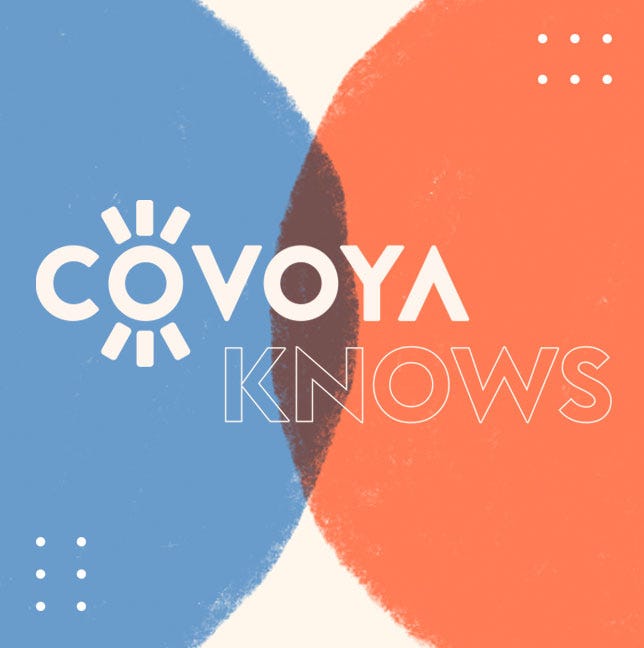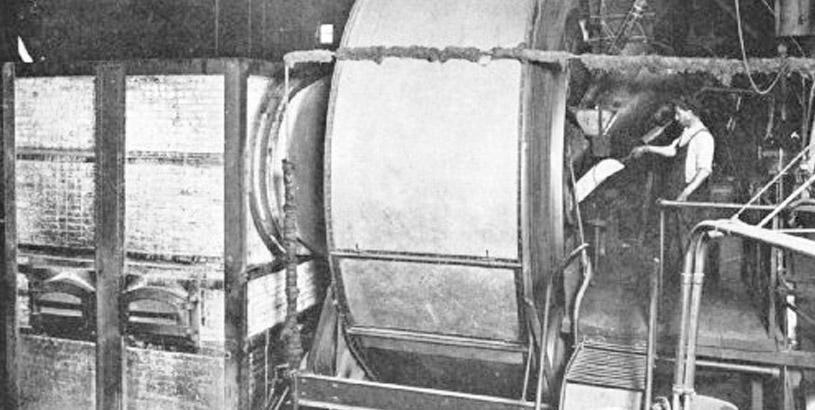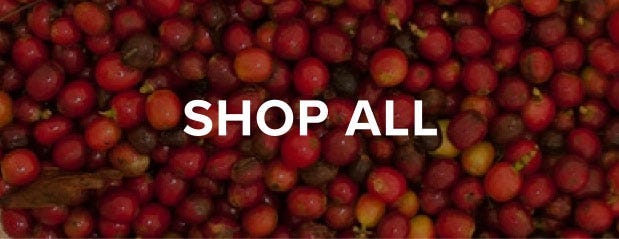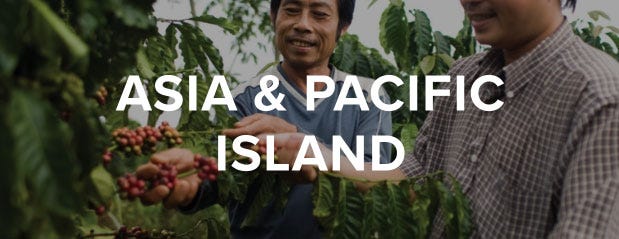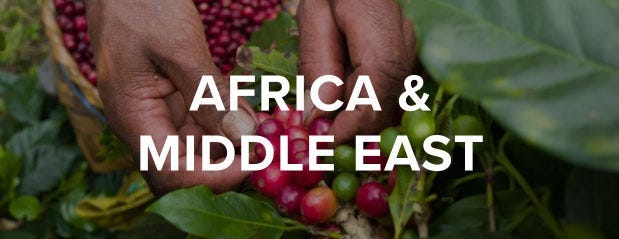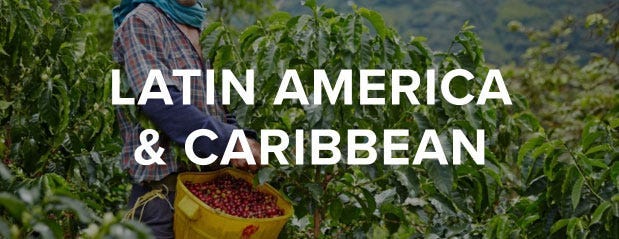The Exchange: Episode 6 - The Coffee Roaster & Cupping Part 1
- What's in your cup ... or glass ... or can?
- Overdubbing.
- The two crucial roles of Quality Assurance in roasting.
- Everybody starts somewhere.
- There is no best, target not target.
- Where do you start? Basic lab.
- The roaster and the grinder.
- Make sure your sample roaster is right for you.
- Sample roaster should mimic production roaster.
- Workhorse grinder.
- Cupping forms.
- Maintenance.
- Water treatment.
- Making cupping a priority as a critical, multi-use tool.
- Start simple. Easy. Clean. Inviting.
- Romantic data.
- When and why to cup.
Available on iTunes and Full Transcript Below
PLEASE REMEMBER TO SUBSCRIBE TO OUR PODCAST IF YOU'RE AN ITUNES USER AND/OR FOLLOW OUR PODCAST ON SOUNDCLOUD
The Exchange is Presented by Olam Specialty Coffee
Hosted by Mark Inman and Todd Mackey
Directed by Mike Ferguson
All music is available and used under Creative Commons:
Opening Theme, Coffee After Six by Crete Boom cc-nd cc-nc cc-by Closing Theme, 7th Coffee at 5 am by Tomasz Werbicki cc-nd cc-nc cc-by Note: I must retract my brag at the close of the episode, that I found two songs about drinking coffee late in the day. It turns out Mr. Werbicki's instrumental piece is actually titled 7th Coffee at 5 "am." -M. FergusonEmail Mark and Todd with thoughts and questions, or to arrange to send in your roasted coffee for review at:
Mike Ferguson: If you're looking for episode six of The Exchange presented by Olam Specialty Coffee, hosted by Mark Inman and Todd Mackey, you are in the right place. I'm Mike Ferguson. Episode six is the first of a two part episode, and this time the topic is quality assurance and cupping for the coffee roaster.
Mike Ferguson: In part one, Mark and Todd talk about the nuts and bolts of how and why, roasters should be cupping coffee. So without further ado, and before the coffee cools, here they are. Mark and Todd.
Mark Inman: Good evening and welcome to The Exchange, presented by Olam Specialty Coffee. I'm Mark Inman and with me as always is my cohost Todd Mackey. Todd, how are you?
Todd Mackey: I'm doing well, Mark. It's nice to join you this evening for a special nighttime edition here.
Mark Inman: Yeah, this is a recording for our first time. It's 7:00 PM here on the West Coast and it's a little over 10 out there on the East Coast, so the intro to the what's in your cup is a little bit different tonight. I'm assuming you did not brew a pot of coffee for the show?
Todd Mackey: No, no, actually, and I don't have a cup. I actually don't have a glass. But I do have a 16 ounce can, and I'll tell you what I'm drinking.
Todd Mackey: I have a limited run beer from Tree House Brewing up here in Massachusetts, called Eureka, which is actually an American Blonde style ale, they call it, brewed with citra hops. Relatively low-ABV, what is probably most akin to a session beer from, from these guys, if anyone's familiar. But super juicy, crushable, sweet. It's fantastic. What do you have going?
Mark Inman: Very nice.
Mark Inman: Well, being out here in the wine country, I'm having a glass of, Nico, is the brand. Nico, a Canada now, which is the Italian, uh, version of a ganache.
Mark Inman: This is from a small producer, a very small producer here in Healdsburg that only produces Italian varieties. And he's like you, with the beer. It's a lower alcohol, European style, to the wine so you could drink, quite a bit without getting bombed compared to the usually higher alcohol wines out here in Sonoma county, which can be, you know, between 14 and 17% alcohol. This is quite a bit lower.
Todd Mackey: Right on. What did you drink earlier today? If we can remember back that far?
Mark Inman: Yeah, I was drinking a new crop, Tano Bataks, and there was one more that I had that I really liked. Oh, some El Salvador Pacamaras that I actually liked quite a bit.
Todd Mackey: Nice.
Mark Inman: So, yeah, I kind of had a lot of coffee today.
Todd Mackey: Yeah. No, I had a coffee. One of the lots we landed on the East Coast, actually from Lempira in Honduras, producer called Juan Francisco Lopez. This just single farm, couture, [inaudible 00:03:19] lot that, yeah. Super dense chocolate notes, some toffee, caramel. Very sweet, balanced.
Mark Inman: Very nice.
Mark Inman: As we mentioned in the last episode, if you want to email us with suggestions, comments, questions, or you want to send in your coffee for Todd and I to review, you can do so at theexchange@olamnet.com.
Mark Inman: Last episode, we were giving out a different email address. I don't know what happened, but some of the worst dubbing - I thought I was in an Ultra Man movie - over our polished and talented voices. It was just an atrocity.
Todd Mackey: That's crazy.
Mark Inman: Theexchange@olam ...
Todd Mackey: I thought we had a huge budget for that sort of thing. Did we not get that extension? We couldn't bring in a professional?
Mark Inman: I'm assuming maybe we had an intern or an aspiring radio student. I have no idea how that played out. Because it certainly wasn't the way you and I sound normally.
Todd Mackey: Yeah, well everyone should reach out. Let us know what they think.
Mark Inman: Yeah.
Todd Mackey: By theexchage@olamnet.com please.
Mark Inman: Yeah. And we'll be reading your emails on air. Answering your questions, and adding, or making alterations is you have outright complaints about the way we've been running this show.
Mark Inman: But how could you, really? Todd and I. Let us know what you think.
Mark Inman: Tonight we're going to be unpacking QA. Quality assurance. Quality control. And I'm excited for this one. This is a part of what we do having worked full time in the lab in my past, and obviously a huge part of trading is cupping, and being close to quality management. But I'm sure you feel the same.
Mark Inman: To kick it off and to just dive right in, I thought it might be good to kind of give a wrap on what is QA, and why it matters.
Mark Inman: You know, you can give us good insights from your days from the roasting side mark, and we can certainly talk about what it means for Olam Specialty Coffee.
Todd Mackey: Well, I guess I'll get started.
Todd Mackey: Quality assurance, or quality control, from a roasting standpoint, I think plays two crucial roles. One is, it's a tool to help you buy coffee, and regulate the coffees that you're buying. Keep them in check throughout the year.
Todd Mackey: And secondly, it's to evaluate coffees that you're going to be selling. That could be through production roasting, and therefore, cupping also to come up with marketing terminology for that coffee.
Todd Mackey: I think that in that scenario, in both scenarios, they're serving two different purposes, and have to be looked at two different ways when you're evaluating coffees in that manner.
Todd Mackey: From a buying perspective, it's key. I think what makes me nervous as a trader is when I have clients tell me, "I want to buy the best Colombian. What do you got?" And the question is, "The best for what?" and "How are you using it?" And then they say, "Well, I just trust your opinion."
Todd Mackey: That to me is a very, very scary road to go down. Not that there's any problem with trusting my opinion, but I'm not your company. I don't necessarily know what you're going to be doing with that coffee, how you're going to roast it, what type of machine you're roasting on, what you're actually looking for in the profile.
Todd Mackey: And it's necessary that that person learn to cup. Usually, it comes from, they're new, or they're inexperienced and they don't want to admit they don't know how to do it. Which I have always felt rather silly because we all started that way.
Todd Mackey: There should be no shame in saying, "Hey, what's the best way to set up quality control program?" or "How do you do it? I'm just entering this." And being okay with that, rather than just asking me to build your entire product line for you, and hope that my tastes match yours.
Mark Inman: Sure, yeah. At the end of the day, I've always said, partially joking, but rooted in seriousness, that there is no best, right?
Todd Mackey: Right.
Mark Inman: I mean, we're talking about target, not target, in so many cases. Even in the upper tier of quality, you know. So when we get into quality assurance, quality control, these different pinch points if you will, throughout, you know, roasters, process purchasing through distribution.
Todd Mackey: Mm-hmm (affirmative).
Mark Inman: We really have different considerations to make depending on where they are, who they're selling to, what kinds of economic pressures on the purchasing side or on the sales side exist. So on and so forth.
Mark Inman: It's not as easy as what tickled you pink at the cupping table as much as you're talking about what's the most appropriate business decision here.
Mark Inman: You know, that said, you know, being able to create a program where you can define quality tiers, and what works for those profiles, avatars, and or sort of quality levels can be super helpful when you can build that calibration slowly, surely over time, with your traders, people that you're doing business with.
Mark Inman: Both here in the US, if you're based here, or wherever you're located all the way through to the origin countries you're sourcing from, obviously it's critical.
Mark Inman: It's interesting thinking about why quality matters so much. We've already sort of gotten into it over the course of the last five episodes. You know, when we talk about managing quality, communicating quality, blending for quality, restricting quality for the sake of value. All of these different things. But here we obviously want to take a more practical approach and actually talk about where do you start.
Mark Inman: Say you're first day on the job. What's the very most basic setup in terms of creating a lab, and where would you recommend someone to begin?
Todd Mackey: Sure.
Mark Inman: Whether as a roaster, or someone who's working even at origin trying to set up a more primitive lab that can really get the basics done. What do you think are the most critical pieces both in material and practice? Day one.
Todd Mackey: Well, I think the biggest pieces of equipment obviously are the roaster and the grinder. Everything else is relatively inexpensive to put together.
Todd Mackey: I think that's the one area where a lot of roasters have a hard time spending the amount of money that you need to spend on that equipment. They spend a lot of money on their production roaster, vans and espresso machines for your lab, and then they get around to the sample roaster, and they are like, "Oh my gosh. What can I buy that saves me money?"
Todd Mackey: And I don't think you necessarily have to go crazy and buy a top of the line roaster, but I do think you need to buy a roaster that's appropriate for the amount of samples that you're going to be tasting each week.
Todd Mackey: Someone like Tom Owen from Sweet Maria's espoused for years about the wonders of the five dollar garage sale air popcorn popper, and how you can get a decent roast of that popcorn popper, and has proved that numerous times.
Todd Mackey: And that's an awesome tool if you're only doing a handful of samples a week. If you're doing twenty a day, or even ten a day, that roaster is not going to stand the test of time. It's going to fail relatively quickly even if you have a back log of twenty of these air poppers in your garage. In that case you're going to need to invest in something a little bit better.
Todd Mackey: I also think that the roaster itself needs to mimic the production roaster that you have. So if you're roasting on a hybrid roaster like a Loring, a fluid roaster like a Neuhaus Neotec, or drum roaster, the sample roaster should mirror that type of roasting style.
Todd Mackey: It doesn't make a lot of sense to have a hybrid roaster like a Loring, and then have a drum roaster like a Probat, because the taste is going to be very different.
Todd Mackey: And I get that question a lot from folks. I'm buying this machine. What typ of roaster? And they're often surprised at the suggestions I give for equipment. They're expecting to hear your typical barrel roasters that are out there on the market. And that may not be appropriate for the type of machine they have.
Todd Mackey: As far as grinders go, I think you could get away with any basic Workhorse grinder as long as it's accurate in its grinding. I don't think you need to get a very high quality precision grinder because you're not doing espresso.
Todd Mackey: So, a lot of the Workhorse brands that are out there, Bunn for example, the G2 is a great classic Workhorse grinder, and with the Burrs, that will last a very long time. Obviously you can go up from there. To me, in that particular situation, it's not necessary. As long as the grinder's clean and the burrs are sharp, it's going to work just fine.
Todd Mackey: And then depending on the protocol that you like to use for your cupping, either the SCAA form, or the cup of excellence form. A lot of people like to use, it doesn't really matter. I used to use, back in the day, a Colombian Coffee Federation quick form. I thought that was quite useful.
Todd Mackey: I think that part just depends on what your style is, as long as you're being consistent with that style.
Mark Inman: Sure, sure. Yeah, and name of the game with equipment is maintenance, right?
Todd Mackey: Absolutely.
Mark Inman: So much of having good equipment is maintaining good working order for this stuff. Like you mentioned with the Bunn grinder being a perfectly respectable tool. Classic, price accessible. And if it's maintained, its just going to crush for you week after week, month after month.
Todd Mackey: Yeah.
Mark Inman: One thing I didn't hear you mention which is interesting, and maybe just an oversight. I know as the years go on, these things kind of trickle out, but water treatment. I didn't hear you mention anything about dealing with water. What are your thoughts on that? Do you feel like, I know it's one of the, obviously, paramount in terms of how it affects coffees' profile and taste. One of those things that some people care about. Some people don't. Some people look at it more like wine makers, brewers, distillers might, where water is actually sort of a part of the inherent, unique qualities of how they might choose and present their coffees, and wherever they're located.
Mark Inman: What do you think from a lab standpoint, the basic threshold should be for water quality?
Todd Mackey: Well, I think in your lab, your water should be filtered. I'm hoping that your water line running into the building has a good filtration system that's appropriate for brewing coffee, because you also have the espresso machine to deal with as well.
Todd Mackey: I think that if you don't have a large roasting warehouse, or if you're roasting in a small warehouse or your garage, just good filtered water will get you by. I don't think you should, I knew people that were mixing distilled water and filtered water. I've never really understood the logic behind that.
Todd Mackey: You can go as crazy as doing - I'm trying to think of the product that's out now. It's like Third Wave Water.
Mark Inman: Yeah, yeah, Third Wave Water.
Todd Mackey: Or Global Customized Water does a remineralization packet as well. And they've done that for a long time.
Mark Inman: Yeah. You can go that route, but I think a good filtered water will get you by just fine. When you travel to origin, filtered water is bottled water, is about as good as it's going to get. And the reality is, is that most of your consumers that are going to be brewing this product, especially when you talk about production cupping here. They're not going to be using necessarily good filtered water, treated water.
Mark Inman: And so you need to also taste the coffee from that standpoint, as well. If you live, if you're selling your coffee in your market, you might want to cup using the tap water every once in a while just so you understand how a good portion of your clients are going to actually be experiencing that coffee.
Mark Inman: I think it's great to work in a vacuum, but it's also important. You know, also, I've always been a proponent of production brewing where you brew and taste with cream, with sugar, as well as black, because most people are drinking coffee with cream and sugar. You want to see how that coffee reacts in that environment as well.
Todd Mackey: Sure. I mean, we should note just for those who might be setting a more elaborate lab, which ultimately a few years down the road, to have a good espresso set up. Nice equipment for brewing coffee. A myriad of ways exactly how you might put it out over the bar in your café, or how you might hope and aspire to have your wholesale customers brew it.
Todd Mackey: If you're going to be hooking up equipment like this, you certainly want a bare minimum to have a nice particulate filter.
Mark Inman: Without a doubt.
Todd Mackey: For things like [inaudible 00:17:11] that are going to take a grain of sand that's in the water and all the sudden you have an obstruction in the flow restriction that pressures the machine.
Todd Mackey: So obviously a big thing there, I know, in the northeast, we have high chloride content in the water just given the proximity to the ocean and the stone out here, and treating that is good for longevity for espresso machines, and hot water boilers, alike. So that's something good.
Todd Mackey: But I tend to agree with you. I know there's long been a lab standard by the association that sort of says, "Here's the perfect water by total dissolved solids," but ultimately, were not specifying really what the composition of those solids is. That's where the real impact on flavor is.
Todd Mackey: A basic approach, clean, odor free, clear water. That's a great place to start, I feel like.
Mark Inman: Yeah, right on.
Mark Inman: Obviously we jumped in and sort of zoom out for a moment. We're talking, right out of the gate, the most important thing to do is to be able to roast samples, understand the effects of whatever roasting process or equipment that you do choose for your sampling, has on the flavor profile. And then of course, all for the purpose of cupping, right? You're roasting as a precursor to the cupping process.
Todd Mackey: Yeah.
Mark Inman: Clearly, we're saying with that, that cupping is the most important sorting in the quality process for the purpose of specialty coffee. Would you agree, and for you, what has cupping meant, I guess?
Mark Inman: There's a lot of people out there who struggle to find the time to cup, or don't have, maybe, the space allocated in their roaster to either really evaluate the coffees they're buying before they pick them up, which we can certainly support on, but also, they're not getting to cup or taste brew, [adulterate 00:19:26] taste, all ways the coffee that they're putting out to their guests and customers.
Mark Inman: I guess I'd be curious to hear your full run down on how important you feel like cupping as a process is to the business around specialty coffee.
Todd Mackey: It's paramount. It would be like having a restaurant and not tasting your own food. You know, wine makers not tasting their wines. You just can't produce and pump it out there. It would be a complete crap shoot on your end.
Todd Mackey: Lots of things happen in coffee that just are a part of the process. Potato defects is a prime example. It happens. Even if the samples, the pre ship samples, the arrival samples, cup totally clean, you can have that one weird little bean that gets in there and affects the batch. If you're not picking that up in your production cupping, you're putting out an extremely inferior product.
Todd Mackey: That may be falling into the hands of the next great client you want. Or the next group of customers that you're really wanting to lure.
Todd Mackey: You could also taste when coffees are starting to fade or get tired or aren't just in the life cycle of it.
Todd Mackey: For me, cupping needs to be a priority in your business just as much as your roasting facility in general. Your production facility needs to be there. It's a tool for buying. It's a tool for when you get into blending coffee. It's a tool for your production, you know, the life-cycle of the coffee. And it's also a key tool for education of your customers.
Todd Mackey: I think that if you've ever done educational cuppings, customers love it. It's an absolute treat for them. It's an exercise that they don't get in other aspects of their life. And it shows them that you're very serious about what you do, that this is something that has science behind it. It is not purely an artistic pursuit.
Todd Mackey: There are, you know, I love the moment of education where people say, "I don't really have a pallette. I don't know good coffee from bad. Or this idea of lemon notes or berry that I hear. I'll never taste that." To prove them wrong within an hour and show them, "Oh, wow, that is what berry tastes like." And "Oh, that is this lemon that they're talking about."
Todd Mackey: And opening their minds. It makes them fans of you permanently. It's much more powerful than an advertisement or a demo in a store. It's much more personal, but it gets you that long term client that we all desperately want in the coffee industry.
Mark Inman: Sure, sure. It's funny. I always go back to this saying that was shared with me what feels like my first day in the door in specialty coffee. It was 'learn to cup, and cup to learn.' And I feel like, for me, that's always been a truth.
Todd Mackey: Right?
Mark Inman: You know, so many of the hypotheses, the things I'm thinking, the things I'm curious about, I've been able to essentially apply scientific method by isolating one variable, one question at the cupping table.
Todd Mackey: Right.
Mark Inman: Is this coffee different because of its variety? Is this coffee different because of its roast profile? Is this coffee different because the aspect of where the farm sits in this particular mountain range, for example? All of these question can be answered from a sensory standpoint at the cupping table, which allows you to be a student, but of course, to your point, all of the sudden you're opening up this opportunity for people who might be a little further behind you on the road to have doors open for them as well.
Mark Inman: You are kind of making a way for people to have the light bulb turned on, which is incredibly transformative and becomes endearing indefinitely, which is awesome.
Todd Mackey: Sure. So, yeah, my recommendation with a lab is always when someone is building out a roaster, even a really simple - I think of like the first spot any roaster has. Some garage door, walk up type of, you know, a thousand square feet, if that. And they're trying to think about how to have a lab, or how to have somewhere they can actually taste their coffee.
Todd Mackey: My recommendation is always, you need that space. Make it easy to cup.
Mark Inman: Right.
Todd Mackey: Make it easy to cup. Because if it's not easy, you're not going to do it. And so, if you have a break table, and that doubles as your desk, and that doubles and the packing table, and you know, to cup once a week, you've got to clear that thing off of six inches of papers and materials and all that kind of stuff.
Mark Inman: Right, right.
Todd Mackey: It's quickly going to fall out the bottom. You're not going to be checking in on your finished, roasted coffee quality. You're going to find it really hard to sustain having a regular sampling program.
Todd Mackey: When push comes to shove, and like any small business owner, you're just burning the candle at both ends to get things done day to day. That extra effort is not going to come out. Or it's certainly going to be a begrudging task.
Todd Mackey: So make the process of cupping, you know, give it a place. Make it easy, Make it enjoyable. I agree. It's totally central.
Mark Inman: Yeah, absolutely. And it could be as simple as a sheet of plywood and saw horses. When you're done roasting, you set it up and you do it when it's quiet in the warehouse, and you get people involved.
Mark Inman: It does have to be something that is easy, clean, inviting. It can't be a hassle to get to. If it's in the corner with all your other stuff, you're going to overlook it, and you're going to make excuses not to do it every day. It will be a crucial mistake if you don't do that.
Todd Mackey: Yeah, and you know, I think of how non romantic cupping once is, but once you gather, like any data collection, right? There's no romance at all until you have a bank of information that you can see themes in. Right?
Mark Inman: Yeah.
Todd Mackey: So, you know, if you can't cup and have it be a part of essentially the process and the schedule week to week, you're never going to have enough data to stand back and actually make decisions on. To see how products trend, and how your process affects your product, and what you're opening the doors for, and sending out once it's done.
Todd Mackey: To that point, and to kind of shift a touch, when you're thinking small company, just getting started, what is an appropriate amount of cupping? When would you say, how would you say to approach cupping? How often? When to schedule it in? Any pointers that you typically give for something like that?
Mark Inman: Well, if you're cupping for buying, it's when you have leeway, some time prior to the need of coffee. So, if it's coffee you're buying, you have the time to at least a week ahead, to cup all of the samples that you get to make that fill. If it's something you're buying from origin, to ship and to arrive, you need to give yourself a significant window of time to get that done.
Mark Inman: If you're doing it for blending purposes, how you're going to do that. That would be ... I like to do that in a team exercise, to have a handful of people involved in that. Because the feedback, the input is important.
Mark Inman: And production cupping should be happening at least once a day. At least. Once a day to at least once a week. To cup your production roast, it can be spot checking if you want to, but I think that if you have the ability to do so, it should be every batch that goes out. Specifically to check consistency of that product, as well as spotting any defects that may come through.
Mark Inman: There are taste defects that you're not going to see. That to me, is a crucial one because some of these defects are nasty, and they will affect your reputation if you don't catch them.
Todd Mackey: For sure. Let's say you're real, a simple operation today. You roast, lets say two days a week. Let's say your production is Monday and Wednesday. You're shipping on Tuesday and Thursday. Where do you see a production cupping protocol, chronologically in that process? Where do you see that happening?
Todd Mackey: For the Monday coffees, is it first thing Tuesday morning before everything gets packed? Or is everything packed? If everything is packed on Monday afternoon, you've pulled samples and before things leave Tuesday, you're essentially allowing yourself a moment to pull coffees back if there's something reactionable on the table.
Mark Inman: Yeah.
Todd Mackey: Is it something more nuanced, where come weeks in, do you cup everything and you cross your fingers that you don't find anything that you have to call to explain before a customer [Yeah, you definitely don't want to do that. 00:28:55] breaks into a bag, or what do you think?
Mark Inman: Yeah, in a perfect world, you're roasting on Monday, cupping Tuesday morning, starting your packing right after the coffee's passed muster. I think that that's great.
Mark Inman: Maybe leave Fridays for buying. You're cupping for buying coffees you're looking at. If you're buying weekly, or if you're buying monthly, at least allowing one day a week that's solely for the purpose of buying coffee. Cupping.
Mark Inman: On the production side, that's also a good window to do cupping for marketing purposes, which again, is a different purpose, and a different language should be used in that type of cupping. But you could, at that point, make additional notes, that I personally feel don't belong on a normal evaluation form, but are clearly used for marketing purposes.
Mike Ferguson: On the off chance that you've forgotten where you are, and what you're doing, you've been listening to The Exchange, presented by Olam Specialty Coffee. Hosted by Mark Inman and Todd Mackey. Directed by Mike Ferguson. In fact, you are listening to episode six, a two part episode on quality assurance and cupping for coffee roasters, which explains why we interrupted Mark just before he started talking about one of his pet peeves at the cupping table.
Mike Ferguson: That's for episode seven.
Mike Ferguson: Our opening theme was 'Coffee After Six' by [Crete Moon 00:30:24]. Our closing theme, 'Seventh Coffee After Five' by Tomas [Rebicke 00:30:29].
Mike Ferguson: There's a high degree of probability that I didn't pronounce that name correctly. But I've made up for it by the fact that our opening and closing themes are both songs about drinking coffee late in the day. Not quite a hat trick, but impressive nonetheless.
Mike Ferguson: All must is used under creative comments. Thank you for listening. We'll see you again in two weeks for the next episode of The Exchange, presented by Olam Specialty Coffee.
femal voice: Theexchange@olamnet.com

